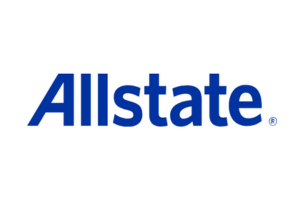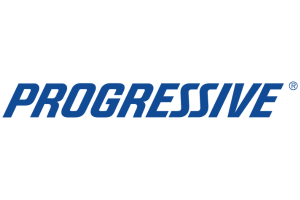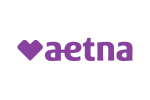Will health insurance cover Face-lift?
Are you considering a face-lift but unsure if your health insurance will cover it? This article explores the question of whether health insurance policies typically cover the cost of face-lift procedures, providing valuable insights and guidance for those seeking this cosmetic enhancement.
Read more Secured with SHA-256 Encryption






Find the Lowest Car Insurance Rates Today
Quote’s drivers have found rates as low as $42/month in the last few days!




Table of Contents
Table of Contents


Insurance Content Managing Editor
Daniel S. Young began his professional career as chief editor of The Chanticleer, a Jacksonville State University newspaper. He also contributed to The Anniston Star, a local newspaper in Alabama. Daniel holds a BA in Communication and is pursuing an MA in Journalism & Media Studies at the University of Alabama. With a strong desire to help others protect their investments, Daniel has writt...
Daniel S. Young


Licensed Insurance Producer
Dani Best has been a licensed insurance producer for nearly 10 years. Dani began her insurance career in a sales role with State Farm in 2014. During her time in sales, she graduated with her Bachelors in Psychology from Capella University and is currently earning her Masters in Marriage and Family Therapy. Since 2014, Dani has held and maintains licenses in Life, Disability, Property, and Casualt...
Dani Best
Updated January 2025
In today’s world, where beauty and youthfulness are highly valued, many people turn to cosmetic procedures to enhance their appearance and boost their confidence. One such procedure that is popular among individuals seeking a more youthful look is a face-lift. However, before considering a face-lift, it’s crucial to understand whether health insurance will cover the cost of this cosmetic surgery or if you’ll have to foot the bill yourself.
Understanding Health Insurance Coverage
Before delving into the intricacies of face-lift coverage, it’s essential to have a clear understanding of health insurance itself. Health insurance is a type of coverage that pays for medical and surgical expenses incurred by an individual or a group of individuals. It provides financial protection in the event of unexpected medical costs, offering peace of mind during challenging times.
What is Health Insurance?
Health insurance is an agreement between an individual and an insurance company, where the insured individual pays regular premiums to obtain policy coverage. This coverage generally includes doctors’ appointments, hospital expenses, and medications among other medical services. However, not all procedures are covered, and cosmetic surgeries like face-lifts fall into this category.
When it comes to health insurance, understanding the terms and conditions of your policy is crucial. It’s important to know what is covered and what is not, as well as any limitations or exclusions that may apply. This knowledge will help you make informed decisions about your healthcare and financial well-being.
Types of Health Insurance Coverage
There are various types of health insurance coverage available, including employer-provided insurance, government-sponsored programs, and individual health plans purchased directly. Each type has its own set of benefits, coverage limitations, and exclusions, making it essential to have a clear understanding of your specific policy.
Employer-provided insurance is a common type of coverage offered by companies to their employees. These plans often provide comprehensive coverage, including preventive care, hospitalization, and prescription medications. However, the specifics of the coverage can vary depending on the employer and the plan chosen.
Government-sponsored programs, such as Medicare and Medicaid, are designed to provide healthcare coverage for specific populations. Medicare is available for individuals aged 65 and older, as well as certain individuals with disabilities. Medicaid, on the other hand, is a joint federal and state program that provides coverage for low-income individuals and families.
Individual health plans, also known as private health insurance, can be purchased directly from insurance companies or through the Health Insurance Marketplace. These plans offer a range of coverage options, allowing individuals to choose a plan that best suits their needs and budget. However, it’s important to carefully review the terms and conditions of these plans to ensure they meet your specific healthcare needs.
Understanding the different types of health insurance coverage available can help you navigate the complex world of healthcare. By knowing the specifics of your policy, you can make informed decisions about your healthcare and financial well-being. Remember to review your policy regularly to ensure it still meets your needs and to stay informed about any changes in coverage or benefits.
Free Health Insurance Comparison
Compare Quotes From Top Companies and Save
Secured with SHA-256 Encryption
The Basics of Face-lift Surgery
A face-lift, medically known as rhytidectomy, is a surgical procedure that aims to reduce the signs of aging on the face and neck. It involves tightening the muscles, removing excess skin, and repositioning the facial tissues to create a more youthful and rejuvenated appearance. While this procedure falls under the realm of cosmetic surgery, it does have some functional benefits, such as improving sight by lifting sagging eyelids.
As we age, our skin loses elasticity and begins to sag. This can result in the formation of wrinkles, jowls, and a loss of facial volume. A face-lift is designed to address these concerns and provide patients with a more youthful and refreshed look. By tightening the underlying muscles and removing excess skin, surgeons can effectively restore a more youthful, contoured, and smoother appearance.
What is a Face-lift?
A face-lift primarily targets the lower two-thirds of the face. It addresses concerns like sagging skin, jowls, deep wrinkles, and the loss of facial volume. By tightening the underlying muscles and removing excess skin, surgeons can effectively restore a more youthful, contoured, and smoother appearance. It’s important to note that a face-lift doesn’t address wrinkles around the eyes or forehead. These areas may require additional procedures like eyelid surgery or a brow lift.
During a face-lift procedure, a surgeon makes incisions along the hairline and around the ears. This allows them to access the underlying muscles and tissues. The surgeon then tightens the muscles and removes any excess fat that may be contributing to a sagging appearance. Finally, the skin is re-draped, and the excess is trimmed before the incisions are closed.
Recovery from a face-lift typically involves swelling and bruising, which gradually subsides over several weeks. It’s important to follow post-operative instructions provided by your surgeon to ensure a smooth recovery. These instructions may include keeping your head elevated, avoiding strenuous activities, and taking prescribed medications to manage pain and reduce the risk of infection.
The Benefits of Face-lift Surgery
While the primary goal of a face-lift is to improve one’s appearance, there are several other benefits associated with this procedure. One of the functional benefits of a face-lift is the improvement in sight that can be achieved by lifting sagging eyelids. As we age, our eyelids can become droopy, obstructing our vision and making daily activities more challenging. By addressing this issue during a face-lift, patients can experience improved vision and an enhanced quality of life.
In addition to the functional benefits, a face-lift can also have a significant impact on a person’s self-confidence and overall well-being. Many individuals who undergo a face-lift report feeling more confident and satisfied with their appearance. This boost in self-esteem can positively affect various aspects of their lives, including personal relationships and professional opportunities.
It’s important to note that while a face-lift can produce remarkable results, it is not a permanent solution to the aging process. Over time, the natural aging process will continue, and some degree of sagging and wrinkling may reoccur. However, the results of a face-lift can last for many years, and with proper skincare and maintenance, patients can enjoy their rejuvenated appearance for a long time.
The Intersection of Health Insurance and Cosmetic Surgery
When it comes to health insurance coverage for cosmetic surgeries, including face-lifts, the general rule is that insurance will not cover procedures performed purely for cosmetic purposes. However, there are scenarios where health insurance may cover a portion or all of the cost of a face-lift if specific criteria are met.
How Health Insurance Views Cosmetic Procedures
Health insurance providers typically categorize procedures as either medically necessary or elective. Medically necessary procedures are those deemed essential for the patient’s health and well-being, while elective procedures are chosen by the patient for aesthetic reasons. As face-lifts typically fall under the category of elective procedures, coverage is often denied.
Exceptions to the Rule
While face-lifts are largely considered elective procedures, there are exceptions to this general rule. If a face-lift is deemed medically necessary due to functional impairments, health insurance may provide coverage. This is often the case when a patient experiences significant vision impairment due to sagging eyelids that can be corrected through a face-lift procedure.
Case Studies: When Health Insurance Covered Face-lifts
In some documented cases, health insurance has provided coverage for face-lift surgeries when specific criteria were met. These instances highlight the importance of medical necessity when seeking coverage for cosmetic procedures.
Medical Necessity: A Key Factor
One example of health insurance coverage for a face-lift is when a patient experiences severe facial trauma due to an accident or injury. In such cases, reconstructive surgery, which may involve a face-lift, can be deemed medically necessary to restore the patient’s appearance and function.
Real-life Scenarios
Another scenario where health insurance could potentially cover a face-lift is when a patient with a history of significant weight loss experiences excessive facial sagging that affects their quality of life. In these cases, health insurance may consider a face-lift to be medically necessary to address the physical and psychological implications of the sagging skin.
Free Health Insurance Comparison
Compare Quotes From Top Companies and Save
Secured with SHA-256 Encryption
How to Check Your Insurance Coverage for Face-lift Surgery
If you are considering a face-lift and want to know whether health insurance will cover the cost, it’s essential to be proactive and explore your options. Here are some steps to take:
Communicating with Your Insurance Provider
Contact your health insurance provider directly to inquire about the coverage details related to face-lift surgery and any criteria that need to be met for potential coverage. Be prepared to provide detailed information and documentation to support your case, such as medical records or reports from specialists if necessary.
Understanding Your Policy’s Fine Print
Carefully review your health insurance policy documents, paying close attention to any exclusions related to cosmetic procedures. Look for specific language that mentions face-lifts or cosmetic surgeries to determine the extent of coverage you can expect. If needed, seek clarification from your insurance provider to ensure you fully understand the terms of your coverage.
In conclusion, health insurance typically does not cover face-lift surgeries, as they are considered elective cosmetic procedures. However, there are exceptions when a face-lift is deemed medically necessary due to functional impairments or specific circumstances. To determine coverage for a face-lift, it’s crucial to have a clear understanding of your health insurance policy and communicate directly with your insurance provider. By gathering all the necessary information, you can make an informed decision about your face-lift surgery with regards to insurance coverage.
Frequently Asked Questions
Will health insurance cover the cost of a face-lift?
In most cases, health insurance does not cover the cost of a face-lift as it is considered a cosmetic procedure. However, there may be exceptions in certain situations where a face-lift is deemed medically necessary.
What are some situations where health insurance might cover a face-lift?
Health insurance might cover a face-lift if it is performed for reconstructive purposes due to a traumatic injury, birth defect, or a medical condition that affects the functionality of the face.
How can I determine if my health insurance will cover a face-lift?
To determine if your health insurance will cover a face-lift, it is best to contact your insurance provider directly. They can provide you with specific information regarding your policy and coverage for cosmetic procedures.
What documentation might be required for health insurance coverage of a face-lift?
If your health insurance considers a face-lift for medical purposes, you may need to provide supporting documentation such as medical records, photographs, and a detailed explanation from your healthcare provider regarding the necessity of the procedure.
Are there any alternatives to health insurance for covering the cost of a face-lift?
Yes, there are alternative options for covering the cost of a face-lift. Some individuals choose to finance the procedure through personal savings, medical loans, or specialized financing programs offered by cosmetic surgery clinics.
What other cosmetic procedures are typically not covered by health insurance?
Generally, health insurance does not cover cosmetic procedures such as rhinoplasty (nose job), breast augmentation, liposuction, tummy tucks, and other elective surgeries performed solely for aesthetic purposes.
Get a FREE Quote in Minutes
Insurance rates change constantly — we help you stay ahead by making it easy to compare top options and save.

